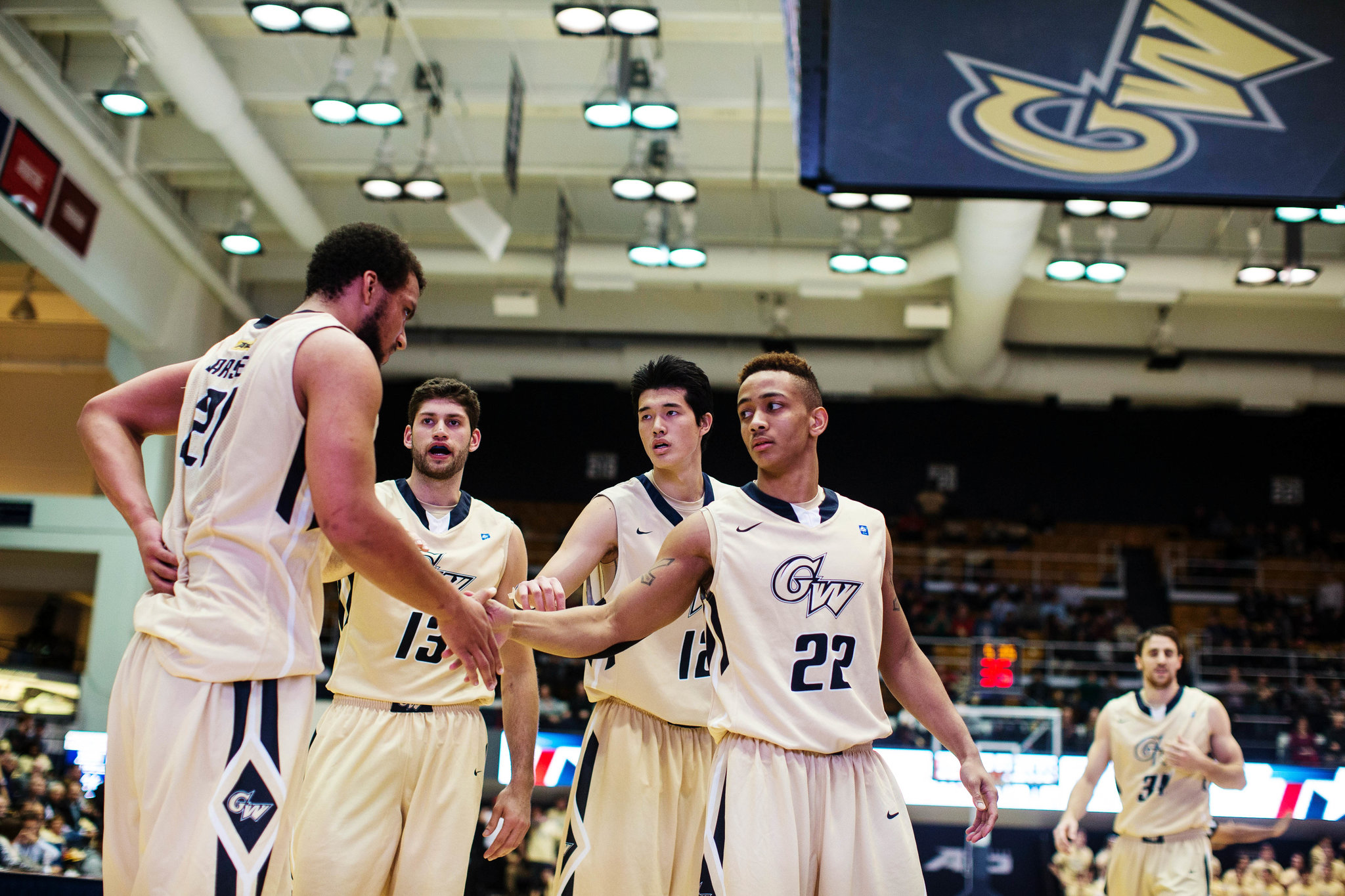George Washington’s Yuta Watanabe Hopes to Inspire Players in Japan. Race issues for other Asian ballers.
WASHINGTON — After Yuta Watanabe’s first workouts at George Washington University, his teammates recognized that he had the jump shot, the speed and the basketball intelligence to succeed at the Division I level.
Watanabe, a skinny Japanese forward, just needed to work on his panache.
“We told him to find a new celebration because the one he had wasn’t cutting it,” said Kevin Larsen, a junior who grew up in Copenhagen. “He was, like, jumping in the air making a weird face. So we tried to help him find a new one.”
Watanabe, from Miki, a small town in the Kagawa prefecture in Japan, is proving to be a quick learner as he navigates through his freshman year at George Washington and his second year in the United States.
Vanderbilt’s Damian Jones guarding Karl-Anthony Towns of Kentucky, which led by only 58-54 with 2 minutes 36 seconds left.Roundup: Kentucky Survives Test Against VanderbiltJAN. 20, 2015
During a game against Saint Louis earlier this month, Watanabe made a key 3-pointer midway through the second half to give the Colonials a 52-49 lead, capping a 13-0 run. While running back on defense, Watanabe lifted three fingers on his right hand and repeatedly pointed to his head, mimicking Carmelo Anthony’s “three to the dome” celebration.
Yuta Watanabe dunking against Richmond last week. He is navigating through his freshman year at George Washington and his second year in the United States.
“I like when guys show emotion,” George Washington Coach Mike Lonergan said. “I don’t like to show up the other team, but when he hits a big shot, he really feels good. I’ll let him go because it’s all innocent. He’s having fun.”
Game-changing plays are becoming common for Watanabe, who is the first Japanese-born player to earn a Division I basketball scholarship. The 6-foot-8 Watanabe has quickly become an instrumental player in George Washington’s rotation as the Colonials (14-4, 4-1) aim for an Atlantic 10 title, as well as consecutive N.C.A.A. tournament berths for the first time since 2006 and 2007.
“He lives for the big moments,” Lonergan said. “He keeps his composure more than our upperclassmen. He really is a starter for us. I like to start seniors. With Yuta, we have scoring off the bench. If I start Yuta, we have no scoring off the bench at all.”
Watanabe, 20, is usually George Washington’s sixth man, but he is regularly on the floor at the end of the game. Against ST. Louis, Watanabe blocked a game-tying 3-point attempt by Mike Crawford at the buzzer to seal a 75-72 win.
Watanabe is averaging 8.0 points a game and shooting 83.8 percent from the free-throw line. Recently, he has been attempting the team’s technical foul shots, a duty Lonergan said he would normally never give a freshman.
But it is not free throws that have made Watanabe one of the most popular students on campus. When Watanabe connects on one of his momentum-building 3-pointers or follows the ball to the rim for a putback dunk, the home crowd at George Washington’s Charles E. Smith Center often reacts in hysterics, following with chants of “Yu-ta! Yu-ta!”
The sight of an Asian player having such an integral role in a college team’s success is rare. Including Watanabe, only four Japanese-born players have competed for Division I teams. In 2013, The Japan Times labeled Watanabe “The Chosen One.”
“To see someone of Asian descent, and play as well as he does, it’s cool for college basketball, really cool for the Asian community,” said Richmond guard Zach Chu, who is half-Chinese. Last week, Chu watched Watanabe up close as his team fell to George Washington, 73-70, in double overtime.
Watanabe said he hoped to inspire Japanese players to believe they could compete at the highest level of American college ball.
“Japanese are thinking Americans are bigger and taller and more athletic,” he said. “They are thinking it’s more difficult for Japanese to play in N.C.A.A., but I’m playing right now, so I want to make other people come to the United States.”
K. J. Matsui, who played for Columbia from 2005 to 2009, played with Watanabe on Japan’s national team. He said Watanabe is popular among Japanese basketball fans.
Japan is second behind the United States in supplying web traffic to George Washington’s athletics site this season. Watanabe’s level of notoriety in the Foggy Bottom neighborhood is also rising. Walking around George Washington’s campus, it is not uncommon for students to stop Watanabe and congratulate him on his play.
When Jeremy Lin shot to stardom in 2012, the uncommon sight of an Asian basketball player regularly scoring 20 points a game became national news. Still, even with the globalization of the game during the past two decades, Watanabe is in a rare position. Of the 5,493 Division I men’s basketball players in 2013-14, only 15 identified themselves as Asian.
While attending Harvard, Lin said he struggled with attention being centered on his ethnicity, rather than his performance.
“It was irritating at times,” he said, “but I think more so than anything else, it showed me how unready society was — how unused to Asian-American basketball players they were, because of the amount of attention I was getting for being a skin color versus what I was doing on the court.”
During his career, opposing fans have mocked Lin’s race. Yuki Togashi, who plays for the N.B.A. Development League’s Texas Legends, and Matsui said that during their time playing in the United States, fans taunted them by calling them Jackie Chan or Yao Ming, both of whom are Chinese, not Japanese.
On the road, Watanabe said he had yet to face hostility from opposing crowds.
“If I did, if they said something racist, I don’t care,” he said.
via George Washington’s Yuta Watanabe Hopes to Inspire Players in Japan – NYTimes.com.




